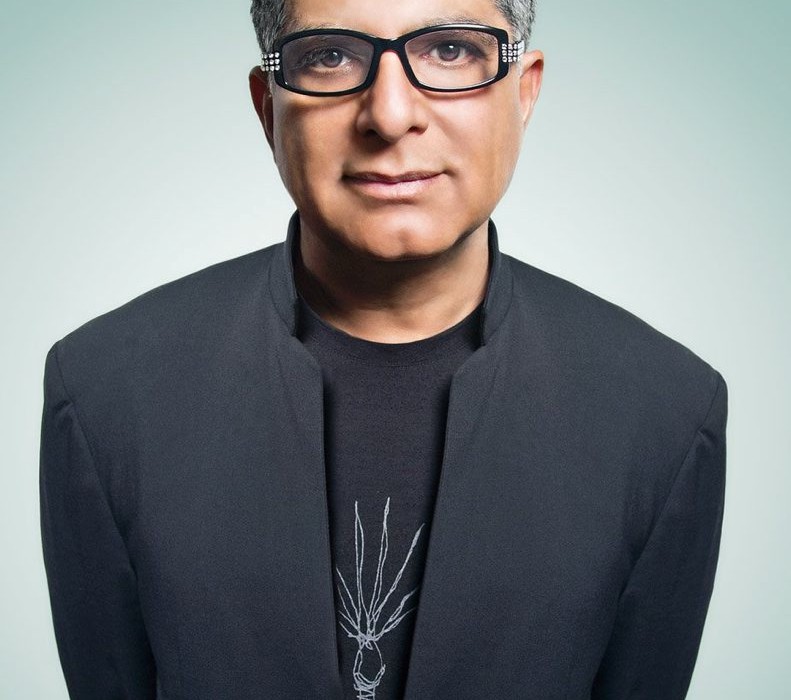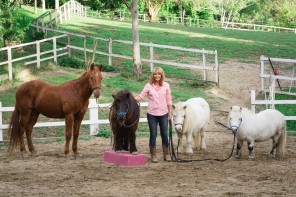When author Deepak Chopra – the man described by Time Magazine as ‘the poet-prophet of alternative medicine’ gives a workshop on where Science meets Spirituality, you can be sure people are going to sit up and listen. Or even meditate and listen, writes Candida Baker, who is still trying to work out the difference between her karma and her dharma…
Q: Over the past few years I’ve listened to many of your meditation series, and I’m wondering if you believe, that meditation is ‘core’ to any spiritual journey? I understand it was your studying of TM and connection with the Maharashi that set you on your ‘quest’…
A: Meditation is the best way to relieve stress and also overcome addictions. I was drawn to meditation as a way to quit smoking. It was a conspiracy of improbabilities that took me from smoking to quest. Meditation lures the biological markers of aging and decreases inflammation in the body, increasing our wellbeing. Regular meditation allows us to access more intuition, more creativity, greater imagination. We are able to reflect on the synchronicity of life.
Q: In terms of the convergence of science and spirituality, do you think there will come a time when scientists will be able to accept fully the non-physical, non-material world?
A: Isn’t it amusing that science at the moment is at a crossroads. Science is based on empirical evidence, science however maintains that the universe is mind independent, and yet insists on empirical evidence that is mind dependent.
Q: You mention, at the start of Reinventing the Body, Resurrecting the Soul, that when you were faced with dissecting a body you realised that thanks to science a huge amount of factual knowledge had been gained but at the same time a wealth of spiritual wisdom had been lost, do you think that back in 2009 at the time of that book, these new ideas of consciousness, experience and self, were waiting to break through?
A: Actually, the breakthroughs came to me as a child. My father was a prominent heart surgeon and naturally I was exposed to life and death situations. At the age of six, my grandfather passed away and it was at that point I decided that I wanted to alleviate suffering and for me, the best way would be to understand that science and spirituality should work hand in hand. We cannot ignore the scientific breakthroughs, yet we cannot dismiss the spiritual wisdoms.
Q: You’ve often written that one of your major strategies in life is to ‘go with the flow’, how do we find that fine line between the linear, factual world, and the organic unfolding world, and feel sure of what we are doing?
A: How can we be sure of what we are doing when we are living in a world of infinite possibilities? If we allow ourselves to ‘go with the flow’ and practice the wisdom of detachment, then in the wisdom of uncertainty resides the freedom past conditioning. By merely being willing to step into the unknown, we allow the universe to orchestrate the dance. This does not mean we give up our intentions and our desire to create, its merely giving up the attachment to a result.
Q: Sometimes it’s not easy to continue to hold a belief in the beauty of the universe when so much of the political world is at boiling point, and when so many terrible things are happening – how can we reconcile those things?
Basically, suffering and conflicts are a result of our fear of death. It’s a human trait that comes about because we are aware of our mortality. How do we overcome them? By finding our true identity. It’s so important that we understand the difference between perceptual reality and fundamental reality.
Q: You’ve talked recently about how women seem to be driving a lot of change in the world – trying not to be imprisoned by old identities – do you think that a shift is trying, or should try, to occur in the patriarchal methodology in which we’ve lived that would allow for a softer, more forgiving world?
A heartfelt person may genuinely want to be compassionate. But how do you know if you are? Compassion is modest and usually silent. It’s a quality others see in you, not one that you claim for yourself. The Buddha became known as the Compassionate One; he didn’t call himself that.
Is compassion known by what it does? In some ways, yes. It’s a sign of compassion if you are caring toward others and unselfish about your own needs. It shows compassion to sympathize with someone else’s suffering and to help them get out of their distress and pain.
But in the Indian spiritual tradition, compassion is not based on actions, however kind, or on feelings, however sympathetic. Compassion is a deeper quality of consciousness. It is related to Jesus’s words, “For what does it profit a man if he gains the whole world and loses or forfeits himself?” In the rising economies of South Asia – and for a long time in the developed West – the question seems pointless. Gaining the whole world would bring untold power and wealth. Losing yourself is invisible and may not be real. In any case, you can cry all the way to the bank.
Compassion is a force that runs counter to selfishness, materialism, and a total focus on external rewards. This is a recipe for frustration and failure in modern times. For compassion to be real, it must be valuable; it must make life better and increase personal happiness. How can those benefits exist when the word compassion means, “to suffer with”?
Compassion brings its benefits as part of expanded consciousness. It’s not an isolated quality. When you expand your awareness, compassion becomes a living reality; it is one aspect of leaving ego behind and living from a higher sense of self. Through meditation, a person finds a deeper level of the mind, and this experience changes pathways in the brain. Therefore, the more you follow the path of awareness, the more your brain is trained to allow compassionate actions and feelings to emerge.
Q: You talk about the power of synchronicity, a term Jung initially used therapeutically, do you believe that synchronicity is an example of spirit and science meeting?
From time to time, we’ve all experienced coincidences that seem to be endowed with special significance. Perhaps the phone rings with a call from a long-lost friend just as you’ve been thinking about that person. Or you keep hearing a certain word or phrase in your reading and conversation. Or something that you dreamed suddenly appears in real life. Jung coined the word synchronicity to describe these moments of meaningful coincidence – a coming together of seemingly unconnected events. If you focus your attention, you may recognize that your life is shaped by those moments of meaningful coincidence. You may even be able to nurture and participate in those moments in a positive way. Together, this awareness and intention make up what I call your SynchroDestiny.
Q: It seems to me that you are obviously living the life you were destined for, and embracing it fully, but many of us struggle to find the way to liberate ourselves from old patterns that will allow us to fulfil our highest potential – do you have any advice for the ‘seekers’?
The advice is simple, and that is to become more mindful. Whatever we seek whether it is to be healthier, happier or more affluent, mindfulness is the path that we can simply choose. What does living mindfully mean? It is observing yourself continuously without judgment.
Q: You’ve had some tough times – including the split from TM and the Maharashi – did you ever doubt yourself and your path?
In Vedic teaching, there is an important concept relating to spiritual evolution and the role that cosmic intention plays in our lives. This is the concept of dharma, and understanding what dharma means is essential to bringing synchronicity into your life.
Dharma is a Sanskrit word that refers to the natural path a person is intended to follow through life. Your dharma is your destiny – but it is destiny without any hint of compulsion or force. On the contrary, your dharma is the path of least resistance. It’s the course that is most right and most nourishing – that brings you the greatest fulfillment and the most happiness. Each of us has a gift, a special purpose that we alone can give to the world. This is our individual dharma. We are meant to discover and share this unique gift. When we do, we have achieved our true purpose in life. If you are in harmony with your dharma, you will always remain anchored in a sense of purpose and meaning.
Q: The Seven Spiritual Laws of Success, which has been your best-selling book ever I believe, was the first mainstream book to marry the laws of nature with the idea of practical fulfillment – and the laws have been part of several of your meditation series. They would seem, at first, to be quite opposed to scientific laws – how do they meet?
A: Ancient philosophies perceived thousands of years ago the existence of some of the realities that science is only now coming to terms with. When you read the works of the original pioneers of quantum physics such as Niels Bohr and Max Planck, they realised that you cannot get consciousness out of the way. Mathematics, experiments and observations are designed in consciousness yet we don’t know where consciousness is. It cannot be found in the brain and because of this, scientists call it the hard problem. The laws of nature and physics co-exist here because nothing actually disappears in the universe, it goes into a state of potential and comes back or gets recycled.
Q: For the workshop it says one of the subjects you will talk about is whether there’s a difference between perceptual experience and fundamental reality – that’s something I often wonder about – could you explain a little more about it?
A: If a chameleon and you stared at a rose at the same time, would you both see the same thing? The answer is of course no. Perceptual experience is species specific and therefore what is actually real. Fundamental reality is pure consciousness, the field of correlation and creativity.
Q: I saw that you are involved in a Sages & Scientists Symposium in California, could you tell me what that’s about?
A: Through the Chopra Foundation we have run for a few years now a conference where we have major speakers on subjects such as consciousness, science, business, culture, the arts and the environment. This year we are exploring the merging of a new future where some of the most urgent questions facing our future evolution will be addressed – everything will be examined from the perspectives of both sages and scientists with the view to finding common ground. We have people as diverse as Bruce Vaughn, the Chief Creative Executive for Walt Disney Imagineering, Danae Ringelmann, the co-founder of Indiegogo and Anirban Bandyopadhyay, the senior scientist at the National Institute for Materials Science in Japan – and many others of course. It is a truly ground-breaking conference, and its aim is unity of science and soul.
A: Thank you.
The 2014 Sages & Scientists Symposium will be held at Omni La Costa Resort & Spa, Carlsbad, California. For more information go to https://www.choprafoundation.org/events-initiatives/sages-scientists/





